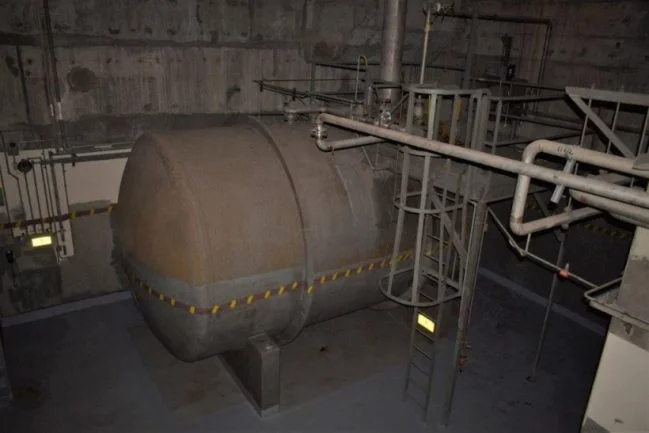
US Department of Energy (DOE) Office of Environmental Management (EM) teams have completed sampling of heavy water moderator storage tanks at the Savannah River Site in South Carolina to determine a final disposition path for the tritiated moderator.
Heavy water contains deuterium (heavy hydrogen). In nuclear reactors, heavy water is used as a moderator to slow down neutrons and ensure an effective fission-chain reaction occurs. Tritiated moderator occurs when clean, non-radiated heavy water is circulated as coolant in nuclear reactors and is irradiated with tritium.
Since 1984, the Spent Fuel Project at SRS has stored 42,000 gallons of heavy water moderator in tanks located in the facility housing C Reactor, which is no longer in use. The moderator was previously used in SRS plutonium production reactors. None of the five original production reactors at SRS are now in use. Of the facilities housing these reactors, two have been filled with grout for permanent deactivation; two have been repurposed for other SRS activities; and one, C Reactor, is one of the storage facilities for the SRS heavy water supply.
“Sampling the moderator was a huge undertaking, involving coordination and input from 12 different work groups at SRS,” said Michael Ellis, Manager of Inactive Facilities with EM contractor Savannah River Nuclear Solutions (SRNS). “The moderator is contaminated due to its previous use, so sampling also required proper planning and hazard mitigation.”
An additional challenge was the lack of personnel experienced in dealing with heavy water, as the tanks were previously opened more than 20 years ago. “Personnel with previous experience working with heavy water have retired or left the site,” Ellis said. “This was an important learning experience for both seasoned personnel as well as the next generation that ensures capability for dealing with this material in the future.”
Samples were sent for laboratory analyses. EM’s Savannah River National Laboratory performed the radiological sample analysis, the results of which will help determine the final disposition path for this material.
“It took a tremendous amount of coordination and collaboration to get the samples shipped from the sampling tanks to the testing labs,” said Alexis Hartwig, SRNS Spent Fuel Project process engineer. “It required continuous contact with the labs to determine what volume of material they would need to meet our requests; timeframe discussion and coordination; and ensuring quality assurance requirements were met to allow for confidence in the results when determining further disposition paths. Knowing lab requirements also helped us gather the proper equipment for the job, another important factor in project completion.”